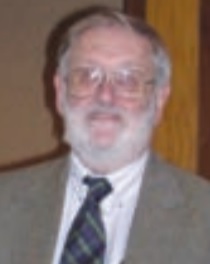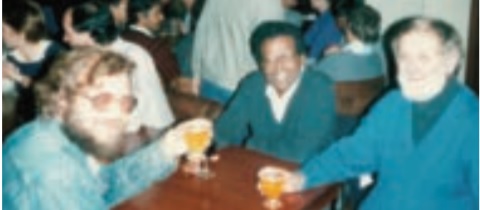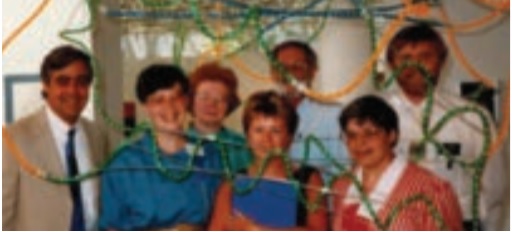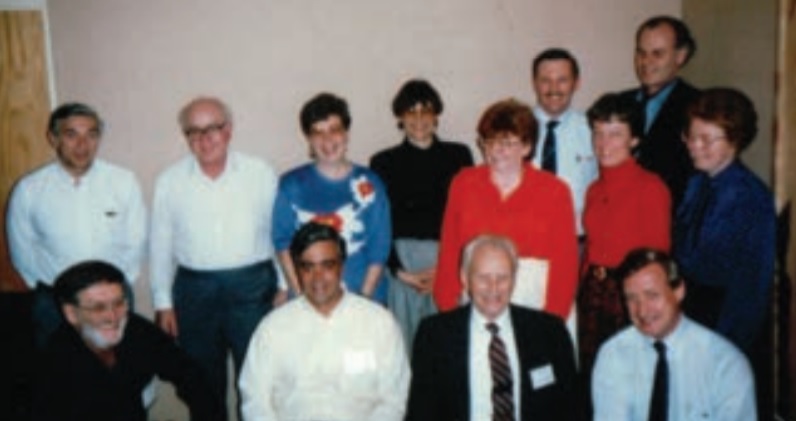Obituary - Bryan Maxwell Craven (1932 - 2017)Obituary | Publications | Curriculum Vitae | Videos | Slides | Articles Bryan Maxwell Craven (1932 - 2017)ACA RefleXions, Summer 2017
We are saddened by the death of our colleague and friend Bryan Maxwell Craven on May 2, 2017. He leaves behind his wife Pat, four children and six grandchildren. Bryan was born in Wellington, New Zealand and received his PhD in Chemistry from the University of Auckland. He came to the United States to work with George Allen Jeffry in the University of Pittsburgh. He was on the faculty as a profession and later as the chair of the Crystallography Department from 1987 – 1995. He also had a long-standing collaborative appointment at Brookhaven National Laboratory. After his retirement, he continued to teach crystallography at Indiana University Pennsylvania. He was an active member of the crystallographic community and served as the president of the Pittsburg Diffraction Society and the American Crystallographic Association. He also taught in the ACA Crystallographic Summer School. His principal scientific interest was understanding the crystal structures of small biologically important molecules at the highest possible resolution using both x-ray and neutron diffraction. Bryan was brilliant, insightful, and fun to be with. The three of us were in Pittsburg in the 60’s and offer our remembrances of this special person. Helen Berman remembers: I first met Bryan in 1965 when he came back to Pittsburgh after a sabbatical in Australia. We shared an office in Thaw Hall and I got to see first-hand how he approached every problem using experimental, computational, and manual analysis. Our office was actually a small lab with a long bench that Bryan used to make models and analyze the hydrogen bonding patterns. I was also lucky enough to take his crystallography course and have kept this notes that I have used in my own teaching. Bryan loved cigars and beer and we all used to love to go out for “grub” in Oakland. We had informal parties in one another’s homes with the many visiting scientists from around the world joining in thee get togethers. Pat who was my friend from college met Bryan at one of these dos and the rest is history. Bryan, Pat, and I kept in touch after I left Pittsburgh in 1969. We saw one another at ACA meetings especially during the years that both Bryan and I were on the ACA Council. We also visited one another socially in Pittsburgh, Indiana, and New Jersey. Their house in Pittsburgh was beautifully and imaginatively decorated. In Indiana, there was a separate little guesthouse adjoining their log cabin. A memorable visit was in 1999 when they came to New Jersey to see their alpacas that was in “confinement” in Stockton. I had no idea there were alpaca farms in New Jersey. At the farm, I found a barn kitten that lived with me for many years and was a constant reminder of my friends. The last time I saw Bryan was when he and Pat came to NY to our 50th Barnard reunion in 2014. Bryan had slowed down physically, but still had that sharp intelligence and humor. I feel very lucky to have known Bryan and will miss his intellect, good humor, and warm friendship. Ned Seeman remembers: Like all of us writing about Bryan, we all knew him for about a half-century. I met Bryan on my first full day as a graduate student in Pittsburgh in 1967. He was teaching the introductory crystallography course for a relatively large class, and Jeff told him that I would be taking my comprehensive exam at the end of the semester (Jeff didn’t say this because I was a probationary student). It was the first time I heard his trademark chortle, and he said, while puffing on one of his Marsh-Wheeling cigars, that I should take the class problem set right away, and he gave it to me. I hand only a moderate idea of what a crystallographer was, but there was something about Bryan that made me say to myself right then, “Ecce Crystallographer.” Turned out I was right. Bryan was arguably the most talented and skilled crystallographer I ever met, and one of the most effective. He knew (and taught) the physics superbly, and he used the chemistry to bring up new aspects of electron density distributions. When I was supposed to teach crystallography myself, I got out Bryan’s notes and found that I had actually learned nothing new, just repeated what he had taught me. Bryan was not above doing anything that he felt it was necessary to do. I was in the ‘shop’ punching cards one night (I said it was 50 years ago), and Bryan came in wearing his ankle-length charcoal-colored lab coat. He was struggling to open a sealed glass bottle of heavy water with a file so that he could deuterate one of his barbiturate structures, and was cursing the glass that was behaving recalcitrantly. He eventually got it opened (not along the file marks he’d made), and proceed to do the chemistry he needed to do. He was the only person I ever saw in the Pittsburgh chrystallography lab actually making and breaking chemical bonds; he looked at what he wanted to do, and then proceeded to do it. Many years later, he drove me up to my grandmother’s grave in a cemetery overlooking Route 51 to check out its condition. The grave was loaded with weeds, and I was kind of baffled about what to do; Bryan just solved the problem by getting down on his knees and yanking the weeds out of the ground. None who knew him will be surprised that while we were up there, he enthusiastically took a bunch of pictures of me lying on various graves with a beer can in my hand.
Ned Seeman, Muttaiya Sundaralingam, and Bryan Craven
ACA 1988 in Philadelphia: left to right - Charlie Bugg, Helen Berman, Catherine Foris, At my first ACA meeting (Buffalo, 1968), I joined him and some of his friends for an afternoon picnic that had a relatively small proportion of food, but a lot of beer. I learned then that there are other things to do at meetings besides attending sessions, one of the most valuable lessons of my life. In 1971, I ent to the Cold Spring Harbor meeting, whose topic was macromolecular crystallographers. The bulk of the meeting was populated by very elitist-behaving macromolecular crystallographers. I was distained as a ‘small molecule’ person, and was feeling kind of lonely. Suddenly, I heard Bryan laughing, and I knew it would be a fun conference. Bryan discovered a small room where we could view the sessions on a closed circuit TV and a fridge containing 25-cent cans of Piels Beer on the honor system. We spent the whole meeting in there, rarely going to the main assembly hall. I had a pretty good time, and I think he did too. Bryan was always the person whose personality lit up any room he was in. He had a great sense of comic timing, and it was always fun to go to the Pittsburgh Diffraction Conference and watch him direct the proceedings with his subtle humor, whether it was introducing banquet speakers or just moving the conference along. At this point in my life, I’m starting to lose a lot of friends, but I can’t imagine anyone whose loss will leave as big of a hole in the fun part of my life. I think everyone who knew him will feel the same.
George DeTitta remembers: I met Bryan in the first few days of my first year in the PhD Program at the Crystallorgaphy Laboratory at University of Pittsburgh. My first impressions were of his accent – not just Jersey City – and of his laugh. Classes began almost immediately and from the first few lectures I thought there could be no better the sis advisor. Bryan took me on, not because I was a stellar student (far from it) but because I enjoyed science so much. I was willing to make up my intellectual deficit with hard work and enthusiasm. Our studies together confirmed what a wise choice I had made in an advisor. Bryan proved to match and exceed my enthusiasm and was willing to give me plenty of rope to play out in my research with him. He knew when to play out line and when to reel me in. We continued his studies of fatty acids with the first studies of cholesterol esters and choleric acids. He never took the straightest road to crystallographic solution but explored new ways, and new wrinkles in old ways, to solve the crystallographic phase problem. I followed him to some time after graduation into his experimental charge density studies and it took me quite some time to forge an independent research direction. In the meantime, we had really become friends. Our humors were at least roughly congruent and our interests in music and arts were similar. Adele and I fell in love with his wife and children. We gave him a kitten from one of the litters we seemed to come upon regularly. Our friendship endured from that day in September 1969 to now, and he is going to be forever a part of me. |





